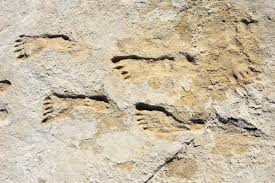
Breaking News
 Creating the First Synthetic Human D.N.A From Scratch
Creating the First Synthetic Human D.N.A From Scratch
 Texas Ready for $10M Bitcoin Purchase After Governor Signs Bill for State Reserve
Texas Ready for $10M Bitcoin Purchase After Governor Signs Bill for State Reserve
 How do you feel about this use of AI
How do you feel about this use of AI
 Big Tech Executives Welcomed as Army Colonels, New Government AI Project Leaked
Big Tech Executives Welcomed as Army Colonels, New Government AI Project Leaked
Top Tech News
 xAI Grok 3.5 Renamed Grok 4 and Has Specialized Coding Model
xAI Grok 3.5 Renamed Grok 4 and Has Specialized Coding Model
 AI goes full HAL: Blackmail, espionage, and murder to avoid shutdown
AI goes full HAL: Blackmail, espionage, and murder to avoid shutdown
 BREAKING UPDATE Neuralink and Optimus
BREAKING UPDATE Neuralink and Optimus
 1900 Scientists Say 'Climate Change Not Caused By CO2' – The Real Environment Movement...
1900 Scientists Say 'Climate Change Not Caused By CO2' – The Real Environment Movement...
 New molecule could create stamp-sized drives with 100x more storage
New molecule could create stamp-sized drives with 100x more storage
 DARPA fast tracks flight tests for new military drones
DARPA fast tracks flight tests for new military drones
 ChatGPT May Be Eroding Critical Thinking Skills, According to a New MIT Study
ChatGPT May Be Eroding Critical Thinking Skills, According to a New MIT Study
 How China Won the Thorium Nuclear Energy Race
How China Won the Thorium Nuclear Energy Race
 Sunlight-Powered Catalyst Supercharges Green Hydrogen Production by 800%
Sunlight-Powered Catalyst Supercharges Green Hydrogen Production by 800%
Fossil footprints confirm the earliest human activity in North America

The issue of when humans first arrived in North America has long been controversial, sparking considerable debate around the validity of fossil dating technologies. Back in 2019, archaeologists discovered human footprints in the ancient clay of White Sands National Park, New Mexico. Based on radiocarbon dating of ancient Ruppia seeds and pollen found near footprints, researchers first proposed this 23,000-year timeline.
The finding predated any evidence of a human presence in the Americas by 10,000 years, suggesting people arrived before the last Ice Age. The work met severe criticism challenging the reliability of the materials used in the radiocarbon dating. Critics argued that Ruppia seeds and pollen in the soil were unreliable markers for dating.
But why were these materials considered unreliable? Unlike other terrestrial plants, Ruppia, also called ditch grass, is known to take up carbon from water. This water often contains dissolved carbon from ancient sources, which is already thousands of years old. This can make the plant appear older than it actually is, which hampers radiocarbon dating. Meanwhile, pollens are lightweight, and older pollens can easily be redeposited by wind, water, or animals.
Therefore, a new study, published in Science Advances, shifted away from these controversial materials and carbon-dated the ancient mud that encased the footprints. The analysis showed that the material is between 20,700 and 22,400 years old, consistent with the original 21,000 to 23,000-year-old estimate from the seeds and pollen.
In total, researchers conducted 55 independent radiocarbon tests with these three materials. All the analyses yielded consistent dates that predate Clovis culture; the human traces generally thought to be the first in the Americas, tracked to around 13,000 years ago.
"It's a remarkably consistent record," said the lead author, Vance Holliday. "You get to the point where it's really hard to explain all this away. As I say in the paper, it would be serendipity in the extreme to have all these dates giving you a consistent picture that's in error."
Yet the study does not answer all questions. It doesn't address why there are no signs of artifacts or settlements left behind by those who made the footprints. While the question goes unaddressed in the current research, Holliday estimates that the hunter-gatherers walked off quickly from the footprint trackway, leaving them not enough time to drop any resources.
"These people live by their artifacts, and they were far away from where they can get replacement material," said Holliday. "They're not just randomly dropping artifacts. It's not logical to me that you're going to see a debris field."

 He 3D Printed a Whole House
He 3D Printed a Whole House

